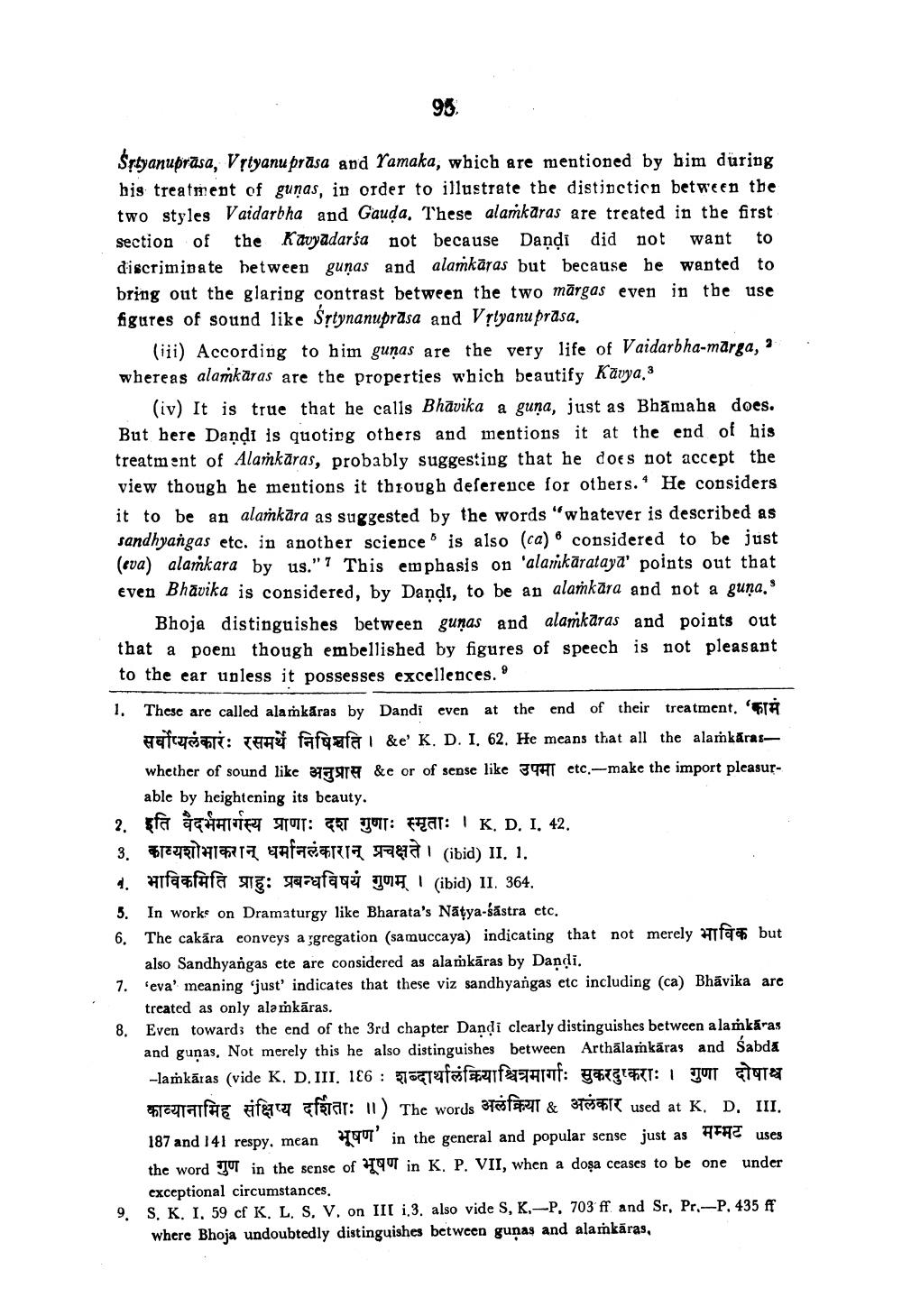________________ 9) Sytyanuprasa, Vityanu prasa and Yamaka, which are mentioned by bim during his treatment of gunas, in order to illustrate the distinction between the two styles Vaidarbha and Gauda. These alamkaras are treated in the first section of the Kavyadarsa not because Dandi did not want to discriminate between gunas and alamkaras but because he wanted to bring out the glaring contrast between the two margas even in the use figures of sound like Srtynanuprasa and Vlyanu prasa. (iii) According to him gunas are the very life of Vaidarbha-marga," whereas alamkaras are the properties which beautify Kavya : (iv) It is true that he calls Bhavika a guna, just as Bhamaha does. But here Dandi is quoting others and mentions it at the end of his treatment of Alamkaras, probably suggesting that he does not accept the view though he mentions it through deference for others. He considers it to be an alamkara as suggested by the words "whatever is described as sandhyangas etc. in another science is also (ca) considered to be just (eva) alamkara by us."? This emphasis on 'alarmkarataya' points out that even Bhavika is considered, by Dandi, to be an alamkara and not a guna.' Bhoja distinguishes between gunas and alamkaras and points out that a poem though embellished by figures of speech is not pleasant to the ear unless it possesses excellences. 1. These are called alamkaras by Dandi even at the end of their treatment. 'STA Hatyari: T a fgafai &e' K. D. I. 62. He means that all the alamkaras, whether of sound like 310918 &e or of sense like ITHT etc.-make the import pleasur able by heightening its beauty. 2. fa CHAIRT ST: T yor: far: ' KD. I. 42. 3. HTTURTH117 qafcant pagi (ibid) II. 1. 4. Hifafafa a: fazafaqi qua I (ibid) II. 364. 5. In works on Dramaturgy like Bharata's Natya-sastra etc. 6. The cakara conveys a gregation (sa muccaya) indicating that not merely a but also Sandhyangas ete are considered as alamkaras by Dandi. 7. 'eva' meaning just' indicates that these viz sandhyangas etc including (ca) Bhavika are treated as only alamkaras. Even towards the end of the 3rd chapter Dandi clearly distinguishes between alamkaras and gunas. Not merely this he also distinguishes between Arthalamkaras and Sabda -lamkaras (vide K. D. III. 186 : 70tef=fazifagarf: ymegtact: 1 JUTT 19 काव्यानामिह संक्षिप्य दर्शिताः // ) The words अलंक्रिया & अलंकार used at K. D. III. 187 and 141 respy, mean in the general and popular sense just as HHC uses the word gut in the sense of 4 T in K, P. VII, when a dosa ceases to be one under exceptional circumstances. S. K. I. 59 cf K, L, S, V. on III 1.3. also vide S, K.-P. 703 ff and Sr, Pr.-P. 435 ff where Bhoja undoubtedly distinguishes between gunas and alamkaras,




